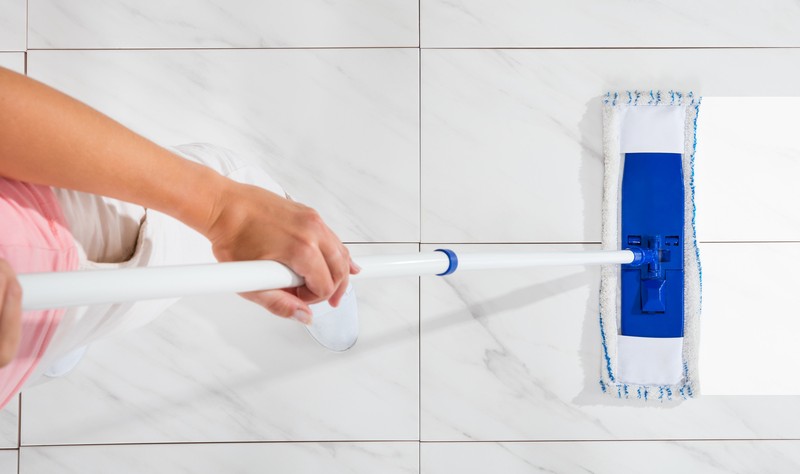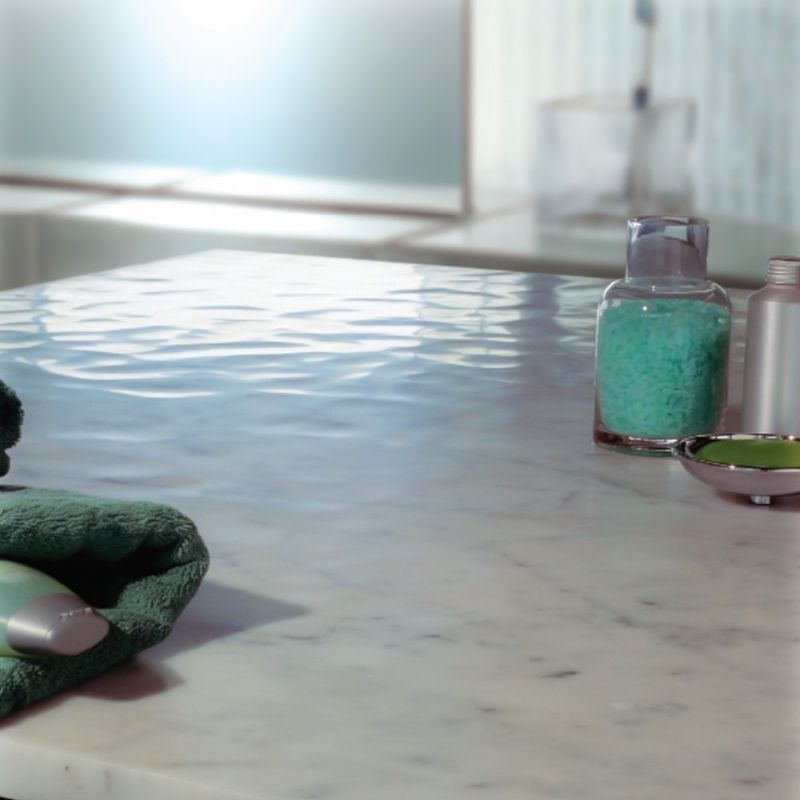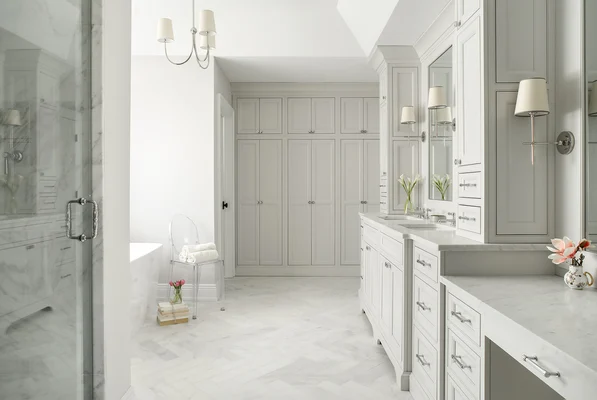Natural stone tile is an investment for your home. As with any investment, you want to protect and maintain it so you can enjoy it for years to come. Since stone is natural, it can be variable sometimes in the way it reacts to different spills and cleaners. Maintenance is crucial to prevent damage to your tile, but sometimes it’s inevitable. We’re going to share some of our favorite ways to not only maintain and protect your stone tiles but also clean and repair your material as needed. Don’t let what you read online intimidate you from using natural stone as if your material is installed & maintained properly, it ages beautifully and can easily be restored by a professional if needed. Natural stone is a great material to last the test of time! Regular maintenance on your natural tile is the best way to ensure it continues to look new throughout the years.
It’s important to assess the stone’s current condition to know how to properly care for it. For example if there’s currently uneven tiles, the floor may need to be ground flat, then refinished as a honed or polished surface. If there are cracked tiles, dirt and other debris will accumulate in the cracks. The tiles may need to be replaced or filled. If there’s evidence of stains, knowing what type of stain it is will allow you to find the proper technique to remove it. The level of stains the stone can be exposed to will also play a role in determining if you should seal it.
Table of Contents
ToggleSealing
If your stone needs to be sealed, we recommend and stock Aquamix Penetrating Sealer, Sealer’s Choice, and Stone Enhancer. Make sure to follow manufacturer instructions for these products, or have it sealed when it’s installed. When stone is properly sealed it helps to protect against everyday spills and debris. In some cases though, it is best to leave the stone untreated as the sealant can build up on certain stones and create a top layer that’s more fragile than the stone itself. Also, topical sealers should not be used in exterior installations because they can trap moisture in the top layer which can lead to surface deterioration during freeze/thaw cycles
Recommended precautions regarding floors and countertops:
- Make sure to use coasters underneath drinks or hot pans.
- Non-slip doormats and area rugs near entrances are a great way to minimize or eliminate harmful debris from being dragged onto the floor.
- Remove excess water immediately from sink and bathroom areas to prevent mold, soap scum, and mildew.
- Reduce potential slipping hazards during wet conditions occur by placing floor runners to dry shoes, wet floor signs, and mop/shovel walking surfaces as necessary.


Cleaning up debris on floors or countertops:
- Frequently using a non-treated dry dust mop or wiping with a microfiber cloth is the best way.
- If you opt for a broom instead, make sure to use a soft-bristle broom.
- If you choose to vacuum, ensure your vacuum isn’t well-worn. The wheels and metal attachments have the potential to scratch the stone.
- Regular rinsing with just clean, uncontaminated water should be sufficient for primary maintenance.
- If your stone is scratched deeply, have it re-polished or re-honed by a professional depending on which stone finish you have. Small nicks and scratches can be buffed out very gently with a 0000 steel wool pad. Do not attempt to buff out deep, large scratches or etches yourself, as it can be abrasive to the stone
- If you feel like you need to use a cleaner, opt for a neutral all-purpose cleaner specific for stone and mix it with plain water or dilute a mild soap such as Ivory. We recommend Miracle Sealants Tile & Stone Cleaner.
Everyday cleaning of stone floors and countertops:
- A microfiber towel, duster, or mop is best for wiping without leaving scratches behind.
- Never use waxes or oils as they will eat away at the stone.
- Also, never use acidic or abrasive cleaners (such as ammonia, vinegar, lemon juice, grout cleaner, bathroom cleaner, tub & tile cleaner. etc.) because it can etch calcific stone surfaces like limestone and marble.


In the case of a large spill or mess that goes beyond general maintenance cleaning:
- Remove any spill as soon as possible by blotting- not wiping. Wiping will only spread the spillage.
- Flush the area with a clean, mild soap such as Ivory diluted with plain water. Then, rinse the area with just plain water several times.
Techniques to clean common stain types:
- Water Spots and Rings (surface accumulation of hard water): Buff with dry 0000 steel wool. In the case of more serious moisture damage such as water penetrating the stone’s cavities or moisture coming up through a floor slab, call a stone professional for assistance.
- Oil-Based Stains (grease, tar, cooking oil, cosmetics): These stains will darken the stone. Normally they must be chemically dissolved so the stain’s source can be rinsed away. Clean gently with a soft liquid cleanser, household detergent, ammonia, mineral spirits, or acetone.
- Organic Stains (coffee, tea, fruit, tobacco, paper, food, urine, leaves, bark, bird droppings): Can cause a pink/brown stain. It may disappear after the source of the stain has been removed. Outdoors, with the sources removed, normal sun and rain action will generally bleach out the stains. Indoors, clean with 12% hydrogen peroxide and a few drops of ammonia.
Other cleaning techniques for more specific areas:


- Bath and Other Wet Areas: Soap scum can be minimized by using a squeegee after each use. When it’s time to remove soap scum, use a non-acidic soap scum remover or a solution of ammonia and water (about 1/2 cup ammonia to a gallon of water). Frequent or over-use of an ammonia solution may eventually dull the surface of the stone.
- Outdoor Pool and Patio Areas: In outdoor pool, patio, or hot tub areas, flush with clear water and use a mild bleach solution to remove algae or moss.
- Exterior Stone: The large expanses of stone generally found on exterior applications may make it impractical to perform normal maintenance on a frequent basis. Large installations, however, should be given periodic overall cleaning as necessary to remove accumulated pollutants. Easily accessible stone surfaces such as steps, walkways, fountains, etc., should be kept free of debris and soiling by periodically sweeping and washing with water.
To Recap, Here’s General Cleaning Do’s and Don’ts:
- Do dust mop floors frequently.
Do clean surfaces with mild detergent or stone soap. - Do blot up spills immediately.
Don’t use abrasive cleaners such as dry or soft cleansers. - Don’t use vinegar, lemon juice, or other acidic cleansers on marble, limestone, travertine, or onyx surfaces.
- Don’t ever mix chemicals together unless instructions specifically tell you to do so.
If this all sounds like too much for you, don’t worry! We also have several low-maintenance, durable tile options to choose from that are just as elegant as natural stone, such as ceramic or porcelain.
If you have further natural stone care questions, feel free to send us an email or reference the Guide to the Care & Cleaning of Natural Stone from the Marble Institute of America, in which much of this information was sourced from.



0 Comments for “Best Tips on Caring For Your Natural Stone”